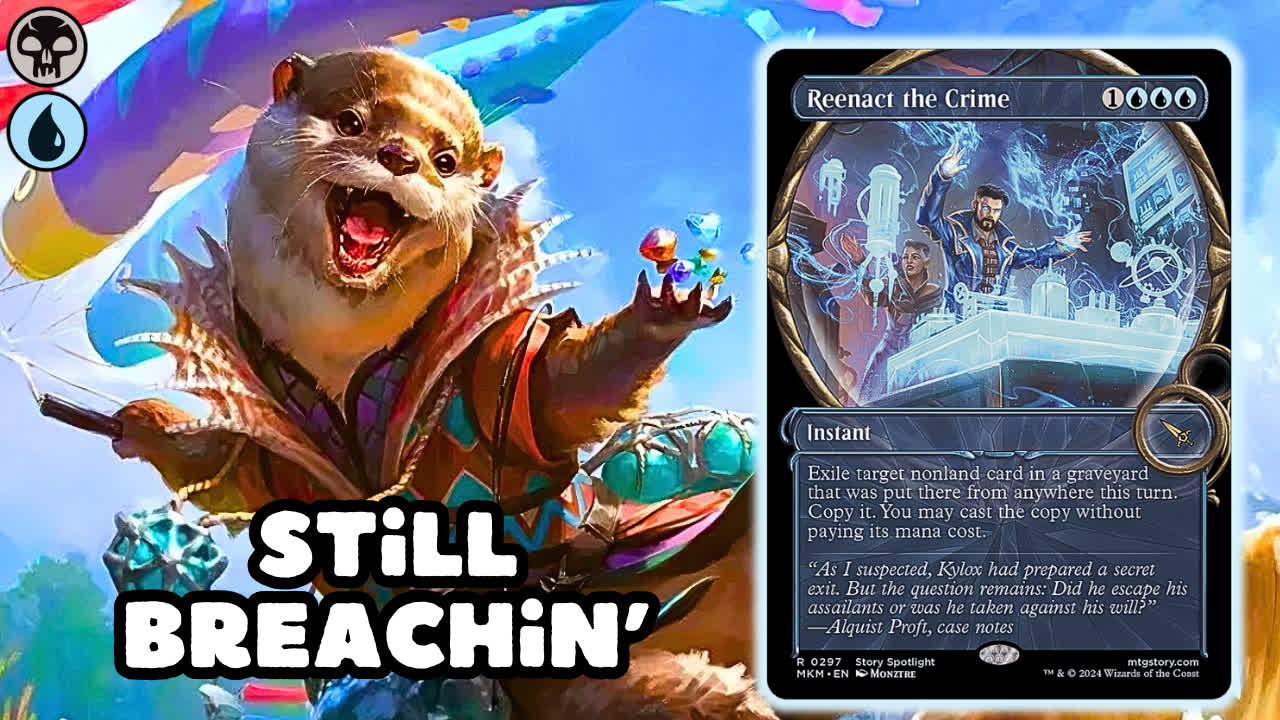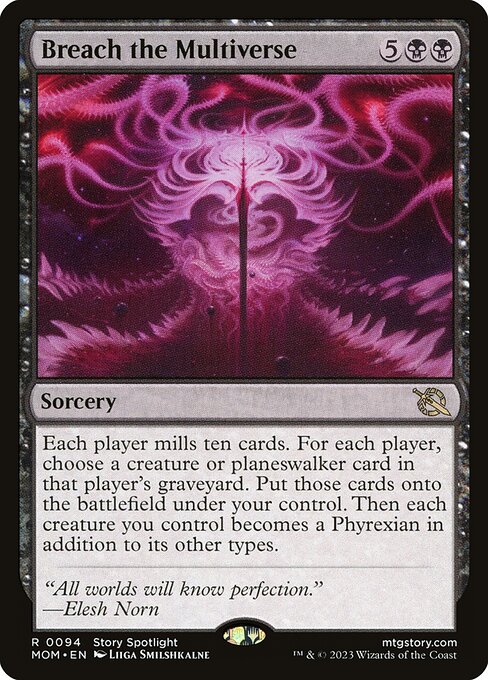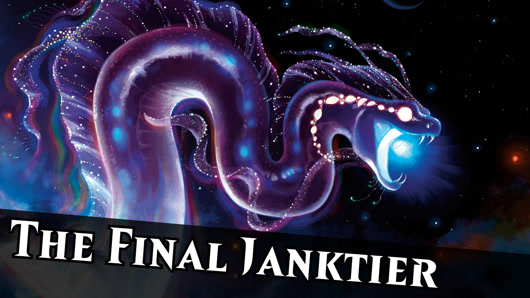An all-in combo deck existed prior to rotation that leveraged Breach the Multiverse, Conspiracy Unraveler, and Repository Skaab to easily mill out both players and pass the turn to your opponent's mill loss. The combo died when Repository Skaab rotated this past fall because Standard wasn't left with a way to recur Breach the Multiverse consistently, but that loop was a favorite of mine and I decided to tackle a build using lots of those same pieces but with less emphasis on combo-killing the opponent and more on the power and value you can set up with the shell.
The Core Engine
Breach the Multiverse is a powerhouse card that allows you to access some of the most powerful creatures in the entire game while also giving you massive information on your opponent's deck. The card is excellent in metas where opponents are likely to bring good creatures and/or planeswalkers to the game so you're getting value coming and going. Even creature-light decks in today's meta carry a few copies of Overlord of the Mistmoors or sometimes Atraxa, Grand Unifier, so we should be safe here. The dream is an opponent who runs Jace, the Perfected Mind, which has been known to happen.
Breach the Multiverse is fine and all, but casting it for seven mana can be a tall order and its whiff potential can make it a lackluster ramp target. Fortunately, for us, Reenact the Crime can get us casting it as quickly as turn three in this deck as long as we're careful about when we toss it into our graveyard. Reenact also gives us flexibility to get our own copies of our opponent's spells in a pinch. In the late game, this can be used to trade resources by copying their removal spells after our board has been established.
Reenact is a card that rewards creative decisions in the game and it also powers our primary strategy. Honestly, if your deck has mill potential, this card is very strong and easy to underestimate.
The Setup
Collector's Vault is a card that does truly nothing if you don't plan to activate it regularly. In most decks, it lines up very poorly because it requires you to take turn two and three off for a single treasure and one loot. The round of looting better be worth it if you're running this card, but for us, it absolutely is. Because the treasure comes in tapped, we can activate this and get a mana back to help us cast Reenact the Crime to cast whatever we discarded. This setup also allows us to cast spells like Breach the Multiverse or Atraxa, Grand Unifier at instant speed and catch our aggressive opponents off guard.
When paired with Reenact the Crime, Collector's Vault is nothing short of excellent. While I'm a fan of the card, I think its narrow application means it's appropriately rated, but it's a four-of here and I'll often mulligan aggressively to find it. The control and card selection it provides is critical to this deck's success.
The Enigma Jewel is a bad card. So why are we running it? Well, it on turn one means we can start activating Collector's Vault as early as turn two right when we drop it. If we get a single treasure back, the jewel has already paid for itself. This also gives us the ramp we need to execute a Reenact the Crime on turn three that is fast enough to even battle red decks in this increasingly aggro-focused format.
Enigma Jewel is primarily in the deck for Collector's Vault, but it also powers up Fountainport and Restless Reef should our primary plan fall through and we need to get creative. Given the popularity of utility lands, Enigma Jewel might be better than I think even outside of this deck, but more to come on that later potentially.
The Finishers
I don't think I need to spend a lot of time explaining these two. They're huge, stabilize your life total, are hard to remove, and generate card advantage. Neither card can be allowed to survive in most games if your opponent wants a chance, so having both of them as potential Breach spins is a great thing. Additionally, if we end up using Reenact on either directly, it's still a great value and mana well spent.
I know what you're thinking, “How could an otter on a surfboard be a game-ending threat?” I know, this creature looks like it belongs in a Lisa Frank coloring book, not as a stone-cold killer in a Magic: the Gathering deck, but trust me, it's a threat. Daring Waverider's enter trigger can be used to pull back Reenact the Crime or a Beseech the Mirror that can, assuming the mill went your way, reenact a copy of Breach the Multiverse. This interaction resembles the Repository Skaab's role in previous versions, but it's not as consistent since it doesn't loop itself and we're reliant on the right cards getting milled at the right time. If our Breach the Multiverses found their way into our graveyard on past turns, we're out of luck here.
You could build a version of this deck with four of these guys and a heavier reliance on looping Breaches, but I think having it as one option rather than the deck’s entire purpose is to our benefit here. If you disagree, feel free to shave one of the aforementioned fatties and plug in a playset of these bad boys.
Conclusion
Breach the Multiverse is probably my favorite single card still legal in Standard and I'm so glad I have an excuse to dust it off again and run it out. Current graveyard hate is a problem when playing in Best of Three, but cards like Withering Torment and Duress are in the sideboard to preemptively address Rest in Peace or Soul-Guide Lantern. If you enjoy graveyard combos, this deck is an absolute blast, and I'd give it a recommendation. I honestly think the meta is in a good place for it since graveyard decks aren't super popular at the moment and its speed gives it game against aggro that this type of value deck often lacks. If you give it a try, please leave a comment below letting us know how it played for you!
Thank you for reading, and happy brewing!















